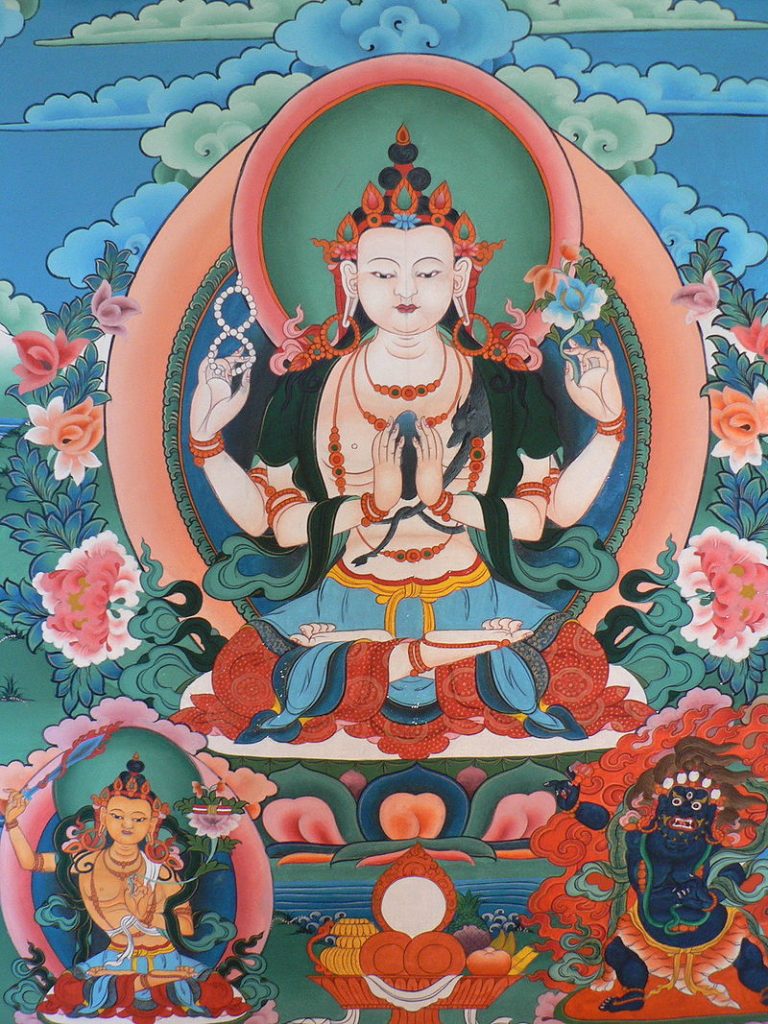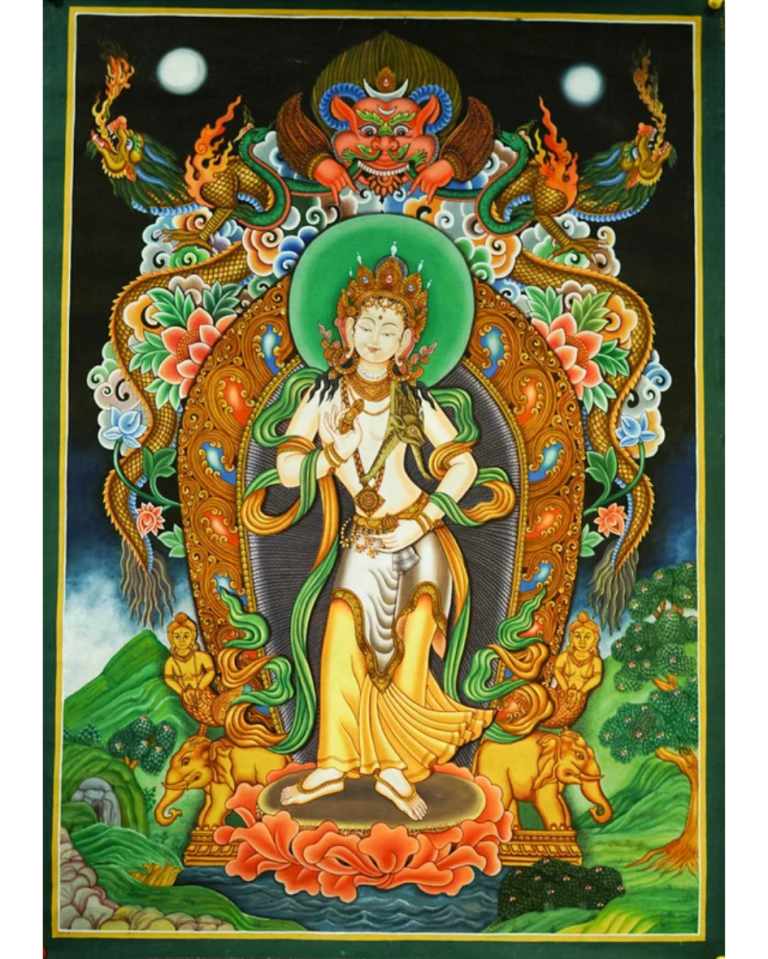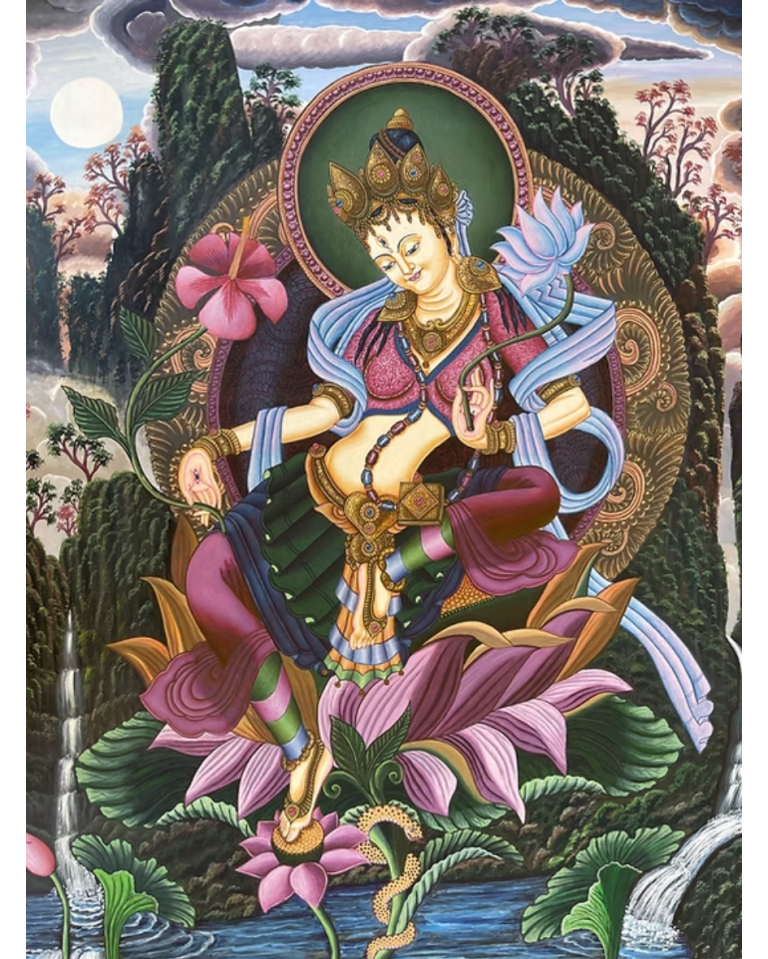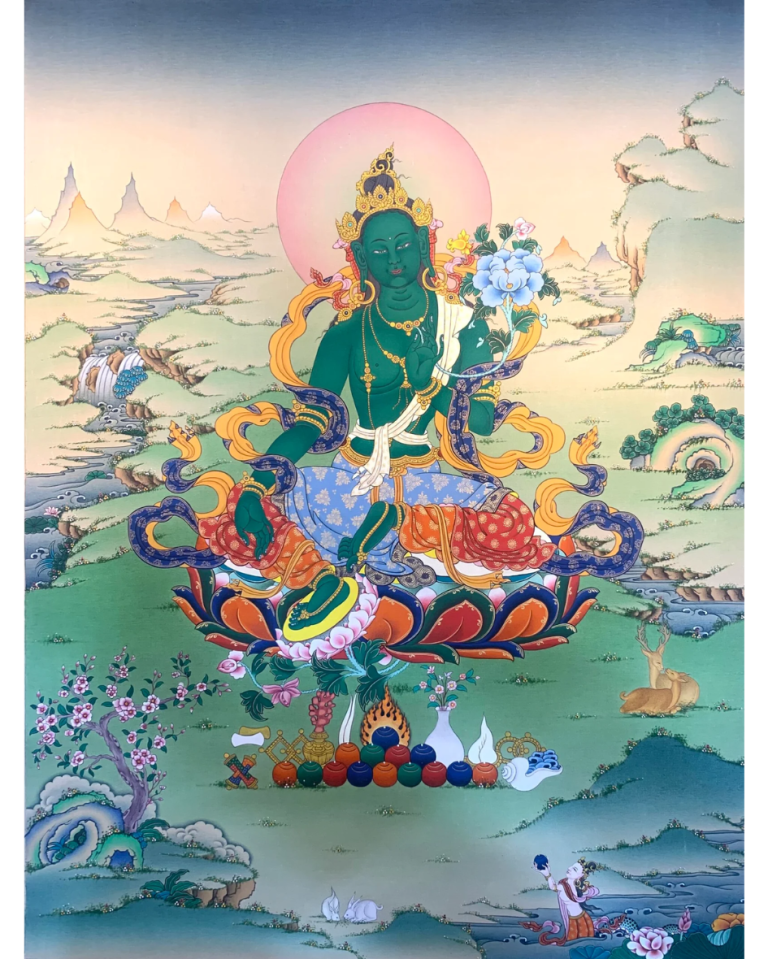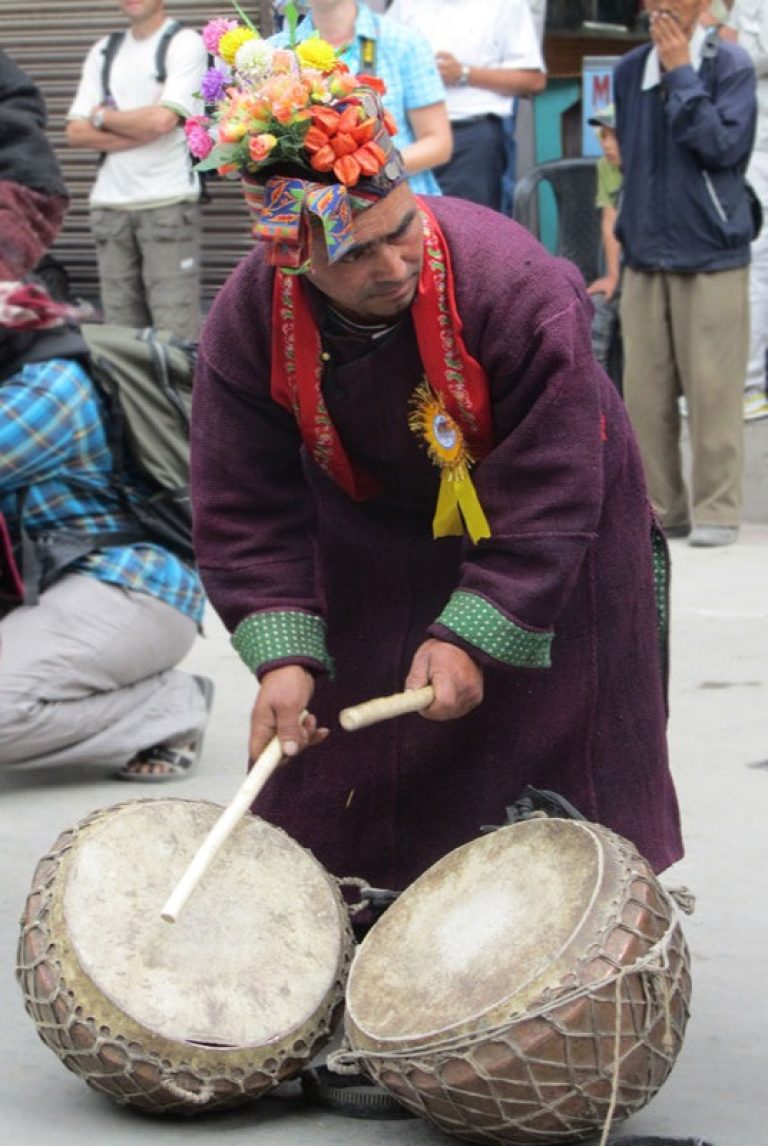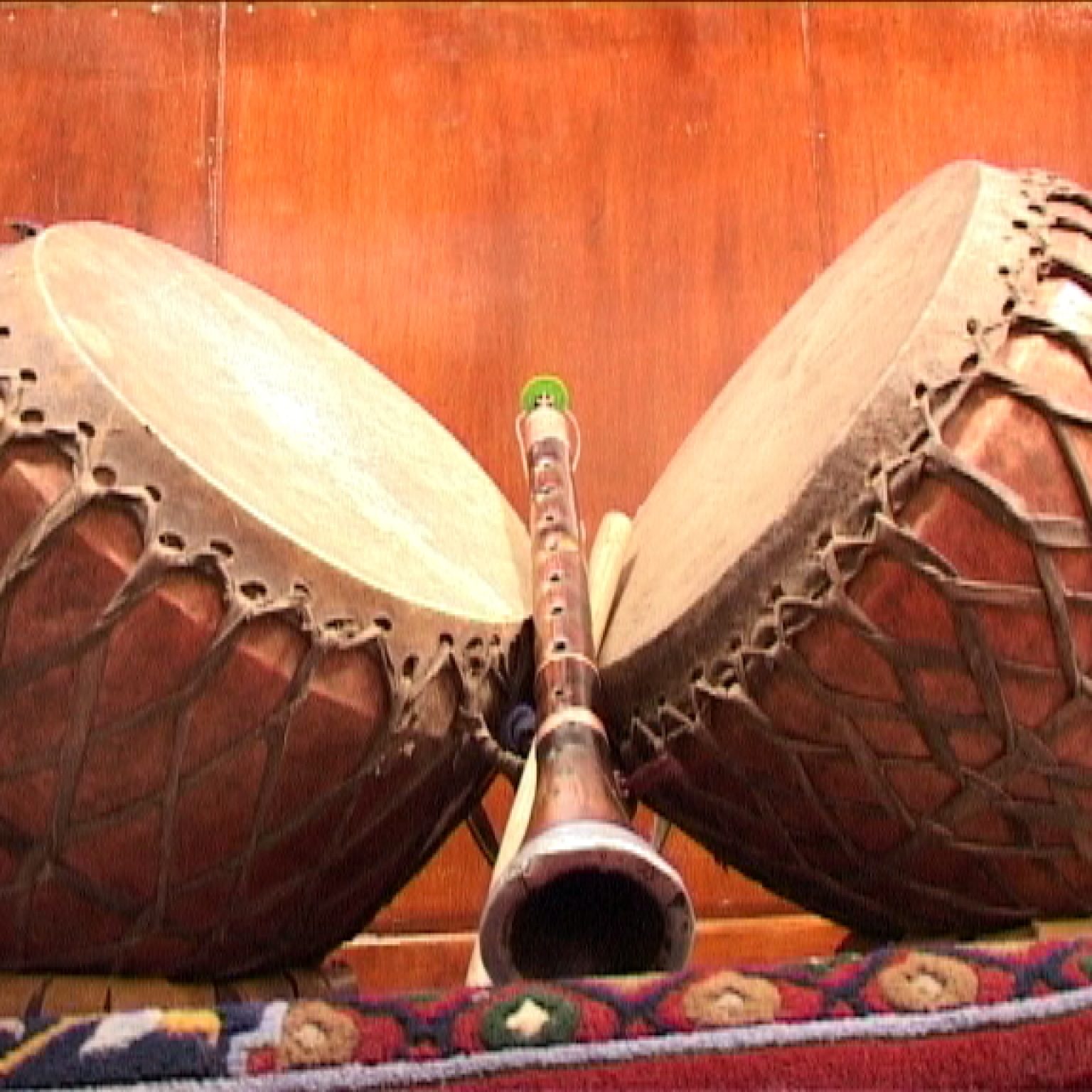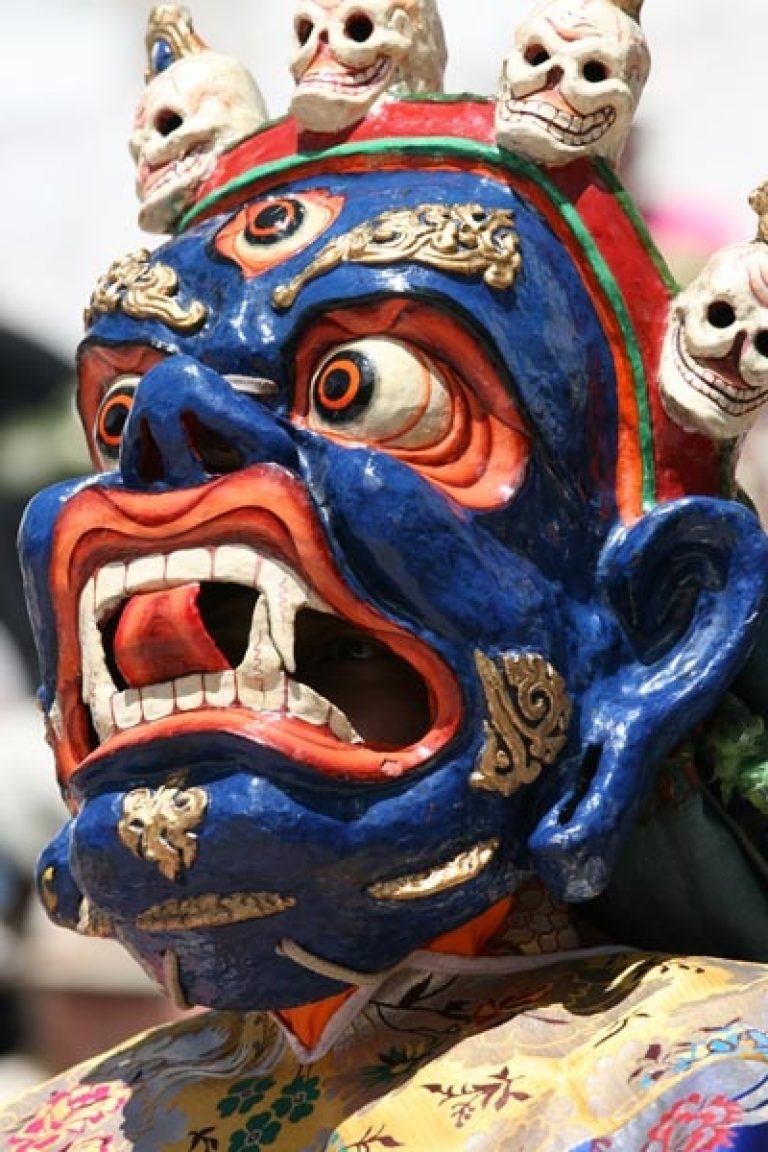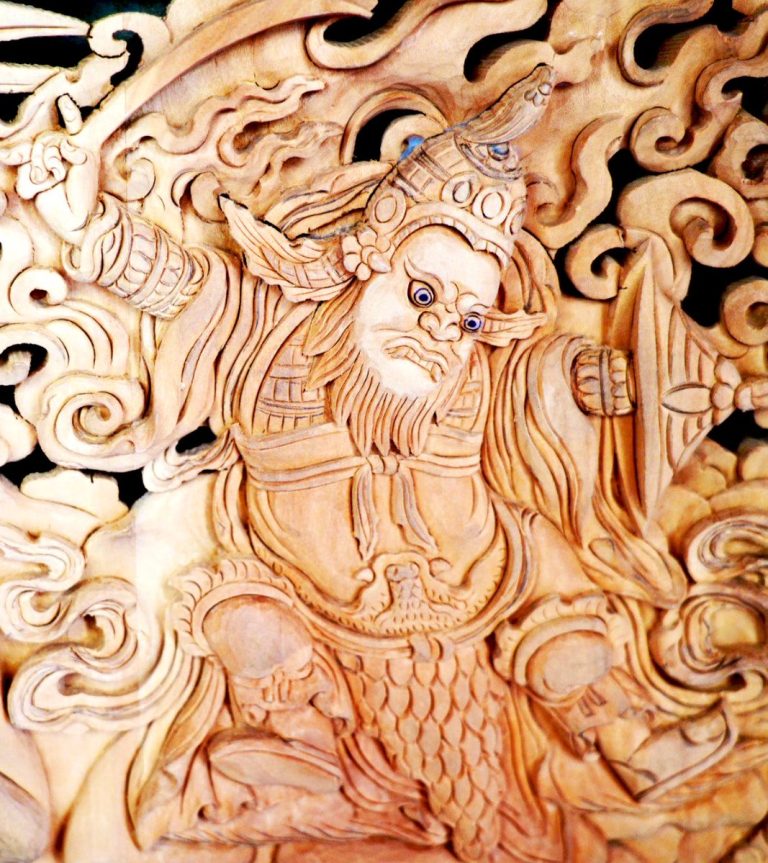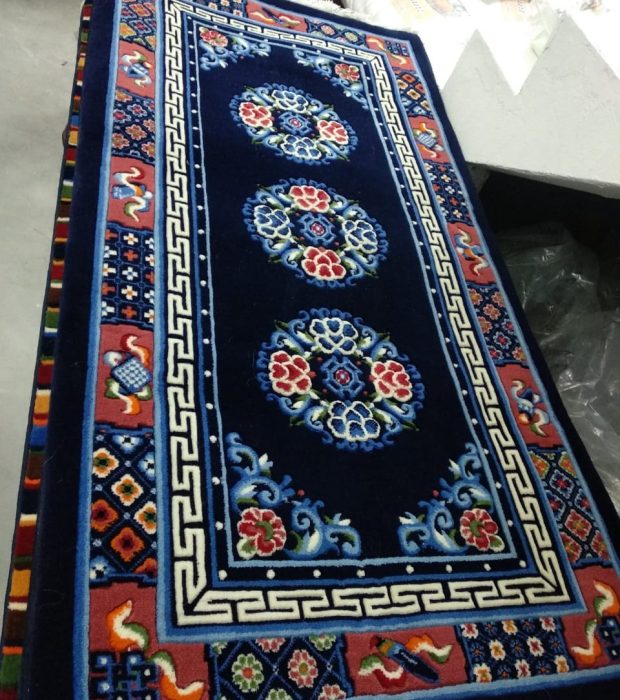Ladakh is not just mountains, monasteries, and motorbikes. It’s a living canvas of ancient art, soul-stirring music, and handcrafted traditions that echo its Buddhist heritage and nomadic life. For explorers seeking depth beyond scenic landscapes, Ladakh’s cultural crafts, instruments, and visual traditions offer a sensory journey through centuries-old narratives. Every mural, melody, and handmade piece tells a story of survival, devotion, and expression at the highest altitudes of the world.
Whether you want to witness monks painting sacred Thangkas, hear the mystical sounds of the Surna and Daman, or take home a handwoven Pashmina shawl, this page gives you an immersive view into Ladakh’s creative soul.
Each village and monastery, no matter how remote or rarely heard of—Spituk, Matho, Sani, Karsha—hosts its own unique celebration. These aren’t just performances for tourists; they are centuries-old rituals where communities gather, gods are invoked, and evil is symbolically defeated. The air is thick with incense, drums echo off the mountains, and masked dancers move with divine grace.
Most of these festivals follow the Tibetan lunar calendar, and many are held in winters or early spring—times when Ladakh sees fewer tourists, but locals gather in large numbers. Attending these is an explorer’s privilege—quiet, authentic, unforgettable.
Whether you’re seeking prophecy at Matho Nagrang, dancing with Changpa nomads during Korzok Gustor, or experiencing winter magic at Spituk Gustor, this festival calendar of 2025 is your gateway to Ladakh’s living heritage.


